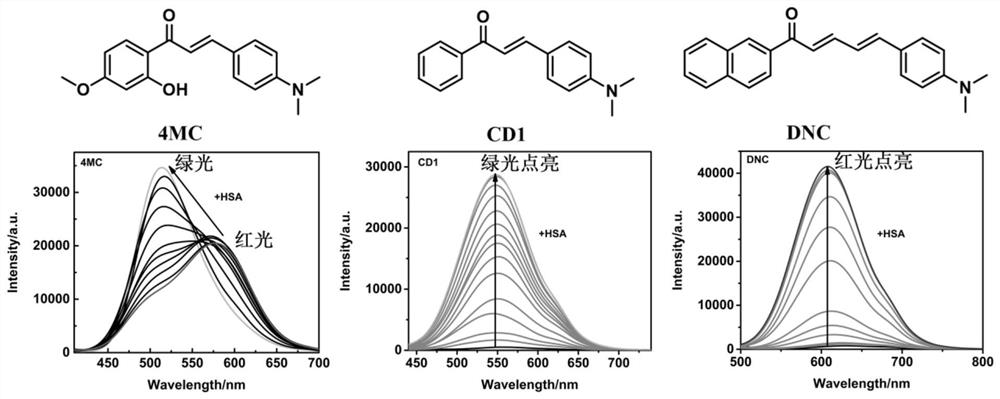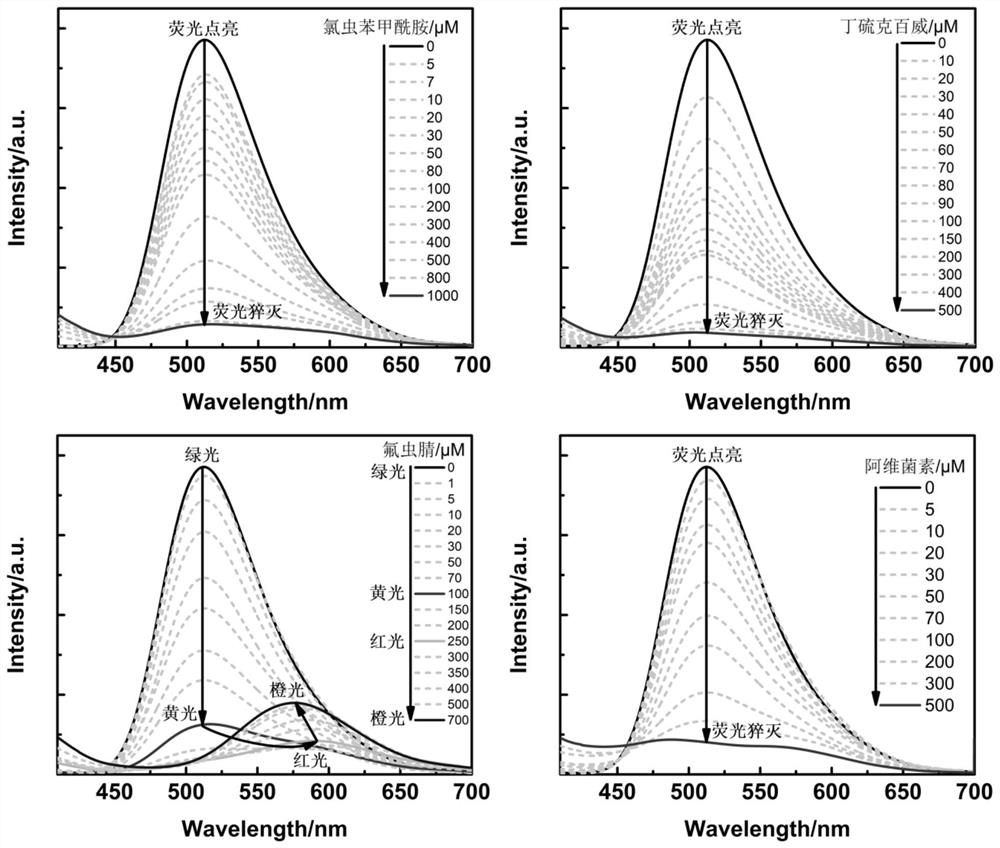Pesticide detection method based on fluorescence analysis
A detection method and fluorescence analysis technology, applied in the field of pesticide detection based on fluorescence analysis, can solve the problems of inability to optimize the detection and analysis of different types of pesticides, and fewer fluorescence analysis systems
- Summary
- Abstract
- Description
- Claims
- Application Information
AI Technical Summary
Problems solved by technology
Method used
Image
Examples
preparation example Construction
[0039] The preparation steps of formula I compound are as follows:
[0040] Dissolve 4-methoxy-o-hydroxyacetophenone and p-dimethylaminobenzaldehyde in a mixed solvent of ethanol and water, wherein the water content is 30-50wt%, add 10ml of NaOH aqueous solution (10-20wt%), and Stir at 80°C for 18-24 hours, pour the reaction liquid into 1000ml of water and add acid to neutralize, and obtain 4MC through recrystallization. Compound structural characterization data such as Figure 5 shown.
[0041] Chalcone CD1 (its structural formula is as shown in formula II) is purchased,
[0042]
[0043] Formula II,
[0044] Purchased from energy-chemical, product number D5312 (CAS number: 22965-98-6), purchase website link https: / / www.energy-chemical.com / front / search.htm? type=anjCas&keyword=D5312.
[0045] Chalcone DNC (its structural formula is as shown in formula III) is self-prepared,
[0046]
[0047] Formula III,
[0048] The preparation steps of formula III compound are ...
Embodiment 1
[0071] Preparation of protein-fluorescent probe system.
[0072] Taking the combination of human serum albumin (HSA) and chalcone 4MC fluorescent probe as an example, the specific preparation method of the protein-fluorescent probe system is as follows:
[0073] Dissolve 66.5 mg of human serum albumin (HSA) in 1 ml of PBS buffer solution (pH=7.4, 0.1X), shake at room temperature for 1 min to obtain a uniform concentration of 1×10 -3 mol / L protein stock solution. Dissolve 3.0mg of chalcone 4MC in 5ml of DMSO, sonicate for 1min to obtain a concentration of 2×10 -3 mol / L chalcone 4MC fluorescent probe mother solution. Pipette 20 μL of the protein mother solution into 2 ml of PBS buffer solution, add 10 μL of the chalcone 4MC fluorescent probe mother solution under shaking conditions, continue to shake for 1 minute and then let it stand for 2 minutes to obtain a protein-fluorescent probe system, human serum albumin (HSA) and chalcone The concentration of the ketone 4MC fluoresc...
Embodiment 2
[0081] Preparation of protein-fluorescent probe-pesticide system.
[0082] The pesticide was dissolved in 2ml DMSO to obtain a pesticide mother solution with a concentration of 50mM. Add different volumes of pesticide mother liquors to the protein-fluorescent probe system obtained in Example 1 (both protein and probe concentrations are 10 μM), and a series of proteins with pesticide addition concentrations of 0-1 mM (0-100 e.q.) are obtained. - Fluorescent probe-pesticide system.
PUM
| Property | Measurement | Unit |
|---|---|---|
| Concentration | aaaaa | aaaaa |
Abstract
Description
Claims
Application Information
 Login to View More
Login to View More - R&D
- Intellectual Property
- Life Sciences
- Materials
- Tech Scout
- Unparalleled Data Quality
- Higher Quality Content
- 60% Fewer Hallucinations
Browse by: Latest US Patents, China's latest patents, Technical Efficacy Thesaurus, Application Domain, Technology Topic, Popular Technical Reports.
© 2025 PatSnap. All rights reserved.Legal|Privacy policy|Modern Slavery Act Transparency Statement|Sitemap|About US| Contact US: help@patsnap.com



